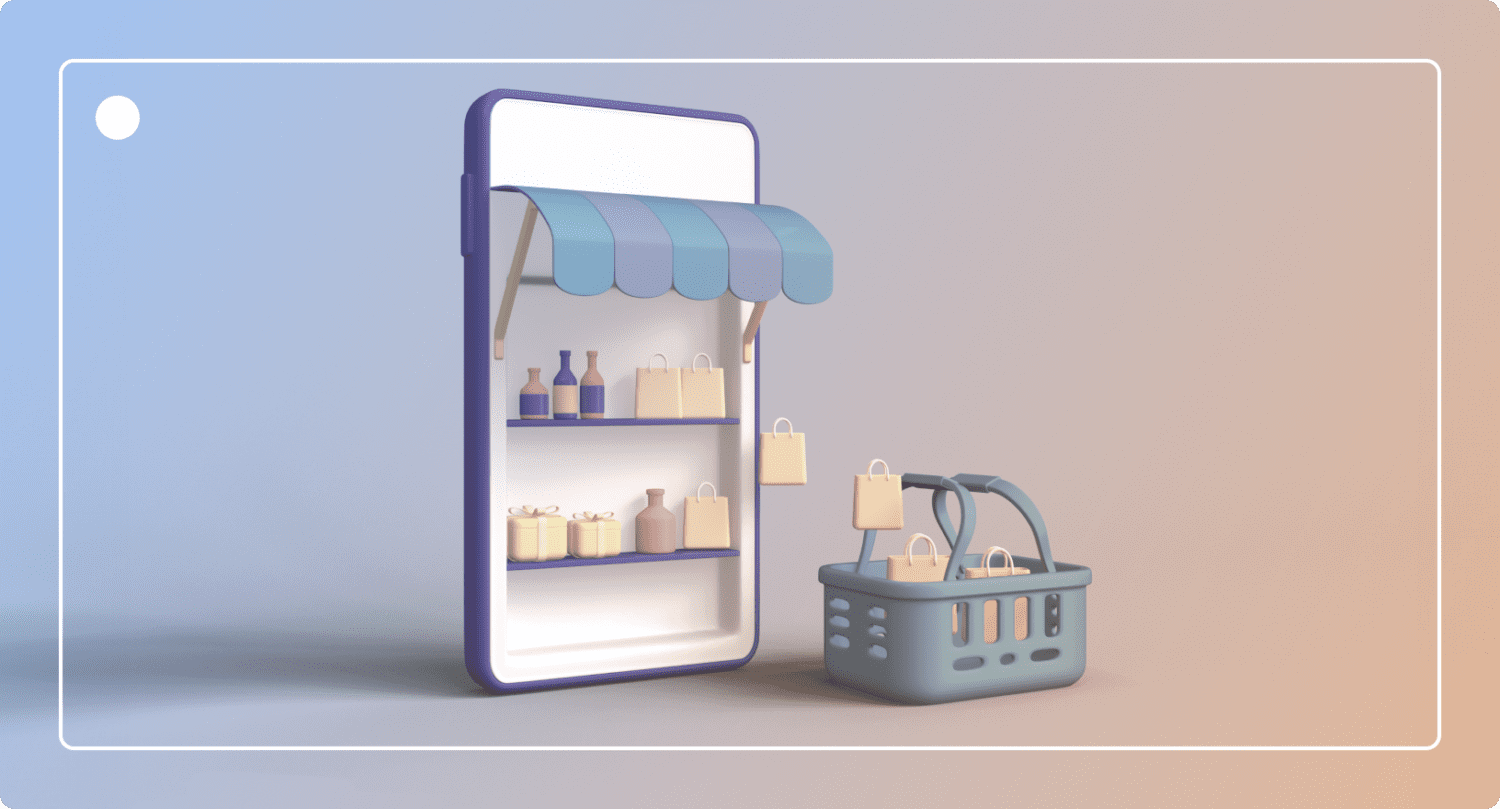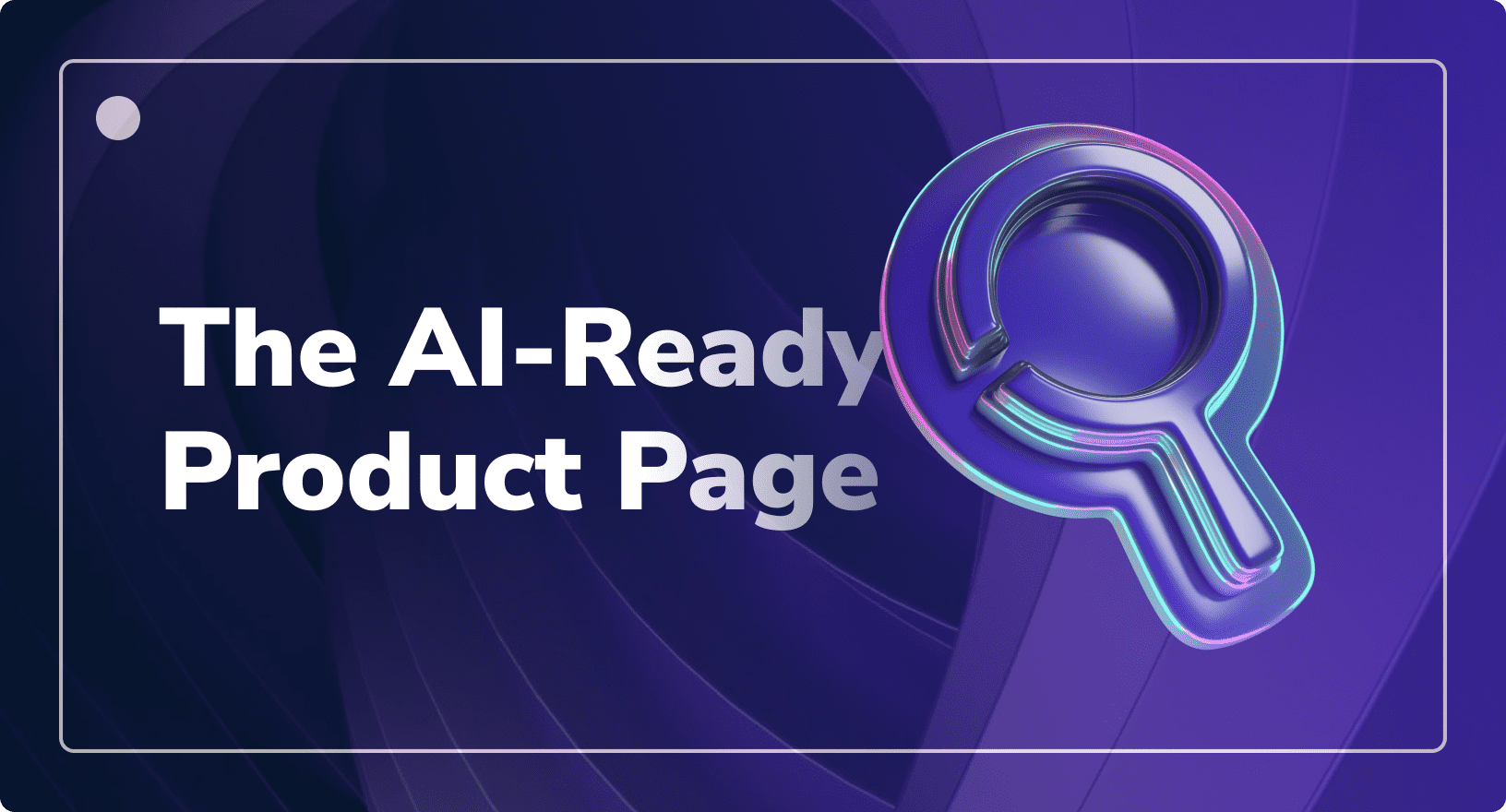In today’s fast-paced online marketplace, standing out is crucial. Brands compete for attention and sales on the digital shelf.
With more shoppers turning to online platforms, mastering digital shelf strategy is more important than ever. This ultimate guide will help you optimise your online presence.
What is the Digital Shelf?
The online shelf is the online version of a store shelf, showcasing a brand or product to potential buyers in the e-commerce world.
It represents how and where consumers find, explore, and assess products online. This digital space spans various platforms. These include:
- Retailer websites
- E-commerce marketplaces
- Social media
- Search engines
The digital market encompasses all elements of a brand’s online presence, including product descriptions, prices, images, and online reviews.
Imagine walking into a busy retail store. There, products line the shelves, each with detailed labels, eye-catching packaging, and reviews from other shoppers.

You compare products, read labels, and make choices based on what you see. Now, think of this experience online. Digital shelf optimisation is like doing that in-store, but digitally.
It’s where customers discover and evaluate products based on their online presentation. Every online interaction forms part of this space, from browsing on Amazon or eBay to checking out items on Instagram or Google.
The Evolution of Retail from the Physical Shelf to Online
The shift from physical stores to online shopping has changed how we buy and sell products. As the internet became more popular, traditional stores began selling online to reach more customers and offer convenience.
Online retail began with websites showcasing products and allowing purchases. Marketplaces emerged, making it easy for consumers to buy and sell items.
These early platforms showed the potential of e-commerce and paved the way for today’s digital marketplaces.
Key Components of the Digital Shelf
The digital shelf is an online space where products are showcased and discovered on retailer websites, similar to a physical shelf in a brick-and-mortar store.
These are the key digital shelf components every e-commerce business should focus on.
Key Components of the Digital Shelf
Product Content
Inventory Management
Pricing Strategies
Search and Navigation
Product Content
Product content is the core of the digital market. It includes all content relevant for product pages, like detailed product descriptions, high-quality images, product videos, and user-generated content like reviews.
Detailed descriptions help consumers understand what they are buying. High-quality image, videos and 3D models give a clear view of the product which mimics the experience of being in a physical store.
User-generated content, such as reviews and ratings, builds trust and credibility. Optimising this content is essential, but we’ll discuss that in more detail later.
Inventory Management
Effective inventory management is essential for a successful digital shelf strategy.

Real-time inventory tracking ensures products are always available for purchase, avoiding stockouts that frustrate customers and hurt sales. It also prevents overselling, leading to negative customer experiences and logistical challenges.
Pricing Strategies
Competitive pricing is vital to attracting and retaining customers. Many businesses use dynamic pricing techniques as part of their digital shelf strategy.
These adjust prices based on demand, competition, and other factors. For example, your shop might need to adjust pricing based on a competitors flash sale.
This strategy helps maximise revenue while staying competitive in the market.
Search and Navigation
SEO is crucial for making products visible on the digital shelf. Optimising product listings with relevant keywords ensures that products appear in search results.
This drives traffic and sales. Good site navigation and a user-friendly interface make it easier for customers to find and purchase products.
Optimising Product Content for the Digital Shelf
In e-commerce, a product’s triumph depends mainly on its online presentation. Most consumers explore products online before purchasing. Product pages have become pivotal digital shelf showcases.
Product Descriptions
Product descriptions serve as consumers’ initial encounter with a product. We can’t emphasise enough the performance disparity between adequate and inadequate descriptions.
Compelling descriptions are informative and persuasive, and provide important details about the product’s attributes and advantages.
Technical specifications and essential features play a pivotal role in high-performing product descriptions and digital shelf optimisation.
Visual Content
Compelling visuals are indispensable for captivating consumers’ attention. Optimal practices for product imagery involve utilising crisp, vivid, and captivating visuals.
These graphics should comprehensively exhibit the product. Furthermore, leveraging product videos and 3D/AR models enriches the online shopping experience by offering an immersive product view.
Customer Reviews and Ratings
Consumer ratings and reviews wield considerable influence in fostering trust and credibility. Tactics to cultivate favourable reviews encompass proactive engagement with online shoppers.
They provide avenues for them to share their experiences directly with other customers directly on online retailers’ product pages.
Review videos take this one step further and provide powerful social proof directly on the product page.
Managing Availability and Pricing on the Digital Shelf
In modern e-commerce, inventory management systems are essential pillars, ensuring seamless operations and timely fulfilment of customer needs.
Moreover, understanding dynamic and competitive pricing is crucial for any e-commerce store.
Inventory Management Systems
Inventory management systems are crucial for modern businesses. They ensure smooth operations and meet customer needs on time.
Digital systems have replaced old-fashioned paper-and-pencil methods. They offer superior accuracy, time-saving features, and cost-effective solutions.
These systems transform how businesses manage inventory. For instance, cloud-based platforms serve as central hubs.
They promote real-time updates and automate processes across various channels. They help monitor sales, track stock levels, and simplify reordering while reducing the need for manual backups.

Barcode-based systems enhance efficiency. They provide instant visibility into product movements using unique barcode tracking.
These systems allow businesses to track every step and optimise processes on stock management.
Warehouse Management Systems (WMS) go further, optimising physical warehouse operations alongside inventory management.
They maximise storage space, improve picking and packing processes, and maintain accurate inventory records, ultimately reducing costs and enhancing accuracy.
Dynamic and Competitive Pricing
Dynamic and competitive pricing are crucial to stay competitive on the digital shelf in today’s fast-paced market. Dynamic pricing means adjusting prices based on factors like:
- Demand and competition
- Maximising revenue
- Staying competitive
Tools like pricing intelligence and algorithms help track market trends and make data-driven pricing decisions. But more importantly, it helps you remain attractive in a crowded market.
Algorithmic pricing analyses digital shelf data to predict optimal pricing strategies. They consider factors like competitor prices and demand fluctuations.

Pricing automation software streamlines the pricing process.
Competitive pricing involves setting prices in line with or slightly below competitors’ prices. This allows online retailers to attract customers and maintain market share.
Price monitoring tools track competitor prices, providing insights to adjust prices in real time and stay competitive, similar to how petrol stations across the street from one another often engage in price wars.
Leveraging Technology and Analytics for Winning the Digital Shelf
Businesses need technology and analytics to keep up and satisfy customers to win on the digital shelf. Recently, most companies have been using AI and machine learning to change monitor ratings, price points, and reviews constantly.
These tools are known as digital shelf analytics tools and can be especially helpful in suggesting products to customers based on their preferences and behaviours.
By understanding what customers like, businesses can boost satisfaction and sales. Plus, AI allows for quick adjustments to recommendations as customer preferences change.
Predictive digital shelf analytics is also crucial. It helps companies manage stock and predict future demand accurately by analysing past data and market trends.
These predictions improve with AI and machine learning, adapting to changing conditions. This helps businesses maintain inventory, avoid shortages, and cut costs.
Predictive analytics also helps make intelligent decisions about resource allocation and improve supply chain operations.
Technology like AI, machine learning, and predictive analytics helps businesses understand their customers better and operate more efficiently.
These tools allow companies to develop innovative and competitive online offerings. But success isn’t just about tech; it’s also about using data wisely and aligning the organisation’s goals.
Businesses that do this well will lead their industries and grow sustainably.
Key Performance Indicators (KPIs)
Key Performance Indicators (KPIs) are vital for assessing the effectiveness of digital shelf strategies. Those are increasingly important in today’s e-commerce landscape.
These KPIs provide insights into how products perform online. They help businesses optimise their digital presence. Here are some key KPIs and tools for tracking internet shelf performance:
Content Health
This KPI measures the quality and completeness of product content on digital platforms. Essential metrics include title length, description length, number of feature bullets, and image quality.
Tools like content management systems (CMS) and analytics platforms can track and analyse these metrics.
Share of Search
Share of search measures the visibility of products in organic search results compared to competitors. Keyword research tools and SEO analytics platforms help identify relevant search terms and track rankings.
Search Rank
This KPI indicates where products appear in search engine results and retailer site searches. SEO tools and rank-tracking software monitor search performance and help improve product visibility.
Onsite Traffic
Onsite traffic measures the number of visitors to product detail pages and websites. Web analytics tools, like Google Analytics, provide insights into consumer behaviour, page views, and click-through rates.

Conversion Rate
The conversion rate tracks the percentage of visitors who complete a transaction. E-commerce platforms and conversion optimisation tools help analyse user behaviour and identify barriers to conversion.
Shopping Cart Abandonment Rate
This measures the percentage of shoppers who add items to their cart but do not complete the purchase.
E-commerce platforms and checkout optimisation tools can identify factors contributing to cart abandonment and improve the checkout process.
Top tools for data collection and KPI tracking:
- Zonka Feedback
- Magpi
- Zoho
- FastField
- Paperform
- Device Magic
The Role of the Digital Shelf in the Customer Experience
The online shelf is critical in shaping the customer experience in today’s e-commerce landscape. The virtual storefront is where consumers browse, research, and ultimately make purchase decisions.
A well-optimised digital shelf space enhances the customer journey by providing easy access to product information, engaging content, and seamless transaction processes.
User-Experience (UX) Design
Creating a positive and memorable shopping experience on the digital shelf is paramount. It involves designing interfaces that are intuitive, visually appealing, and user-friendly.
A seamless and intuitive shopping experience is essential. It keeps customers engaged and satisfied throughout their online journey.
From intuitive navigation to clear product in-store descriptions and easy checkout processes, every aspect of UX design contributes to creating a frictionless shopping experience.
Some best practices for e-commerce UX include:
- Simplified Navigation: Ensure that users can easily find products and navigate through categories with clear and intuitive navigation menus.
- Mobile Optimisation: Optimise the primary digital shelf for mobile devices to accommodate the growing number of shoppers using smartphones and tablets.
- Clear Product Information: Provide detailed and accurate product descriptions, images, and specifications to help customers make informed purchasing decisions.
- Streamlined Checkout Process: Cut steps and reduce friction during checkout to prevent cart abandonment and improve conversion rates.
- Personalisation: Use data-driven personalisation techniques to deliver relevant product recommendations and offers based on individual preferences and browsing history.
Omnichannel Strategies
Omnichannel strategies are essential for seamlessly integrating online and offline experiences. This approach recognises that customers interact with brands across many channels.
These include the retailer’s site, mobile apps, social media, and physical stores. To deliver a cohesive omnichannel experience, businesses must ensure consistency across all touchpoints.
Digital asset management (DAM) and content syndication are crucial in maintaining channel consistency.
DAM software centralises and organises digital assets, such as product images, videos, and marketing materials, making them easily accessible across various channels.
Product content syndication ensures that product information and marketing content are consistently updated and synchronised across all digital touchpoints, regardless of the platform or channel.
Industry Best Practices
Frequent pitfalls in online shelf optimisation, like poor product data quality and limited visibility, can hinder e-commerce success. Inaccurate data and low search rankings make it hard for customers to find and buy products.
To fix this, invest in data management and SEO. Also, integrate online and offline channels for a seamless experience. By addressing these issues, businesses can improve their digital market and offer better customer experiences.
Here is a list of 10 best practices for digital shelf optimisation:
Best Practices for Digital Shelf Optimisation
Know Your Audience: Understand what your customers want and how they shop online.
Engaging Content: Showcase products with attractive images, videos, and clear descriptions.
Boost Visibility: Optimise your online presence to rank higher in search bar results.
Be Consistent: Provide a seamless experience across all channels, online and offline.
Integrate Online and Offline: Connect digital and brick-and-mortar stores to maximise sales opportunities.
Quality Product Data: Build trust using accurate, complete, and up-to-date product information.
Stay Updated: Regularly review and update product content to keep it relevant.
Monitor Feedback: Keep track of customer reviews and ratings to improve products and services.
Customer-Centric Approach: Put yourself in the customer’s shoes to ensure a smooth shopping experience.
Measure Success: Use critical metrics like traffic, conversion rate, and search performance to assess your strategy’s effectiveness.
The Future of the Digital Shelf
Emerging technologies like AI and machine learning are reshaping the internet shelf landscape. They personalise product experiences and optimise pricing strategies.
Augmented reality (AR) and virtual reality (VR) deliver immersive shopping experiences. These technologies bridge the divide between online and offline shopping.
Consumer behavior trends have shifted towards convenience and sustainability. The pandemic accelerated the rise of e-commerce and mobile shopping.
Social commerce is growing, with consumers buying directly from brands and influencers on social media platforms.
In the future, AI and machine learning will drive personalised shopping experiences. Virtual shopping experiences will become more immersive, and voice commerce and smart devices will streamline the shopping process further.
So ask yourself – will your brand or shop be on the front foot, or behind the curve?

Frequently Asked Questions
If you want to learn more about the online shelf, you’ve come to the right place. For additional insights, feel free to explore our homepage and our blog homepage.
The digital shelf is the virtual storefront where consumers discover, explore, and purchase products online. It encompasses various platforms, such as online retailer, e-commerce marketplaces, social media, and search engines.
To optimise for the digital shelf, focus on perfecting product listings, leveraging data analytics, and creating compelling content. Our ultimate guide offers strategies and insights to help you boost your online presence effectively.
Consider utilising tools like Zonka Feedback, Magpi, and Zoho to monitor and manage the digital market. These tools provide valuable insights into key performance indicators (KPIs) and help track digital shelf performance effectively.
Managing pricing strategy for the digital market involves utilising dynamic and competitive pricing techniques. By leveraging pricing intelligence tools and algorithms, businesses can optimise revenue and remain competitive.
Key metrics include content health, share of search, search rank, onsite traffic, conversion rate, and shopping cart abandonment rate. These metrics provide insights into product performance and help businesses optimise their digital presence.
Better Content. More Sales.

Fill out the form to discover our end-to-end eCommerce content solutions for brands & shops





